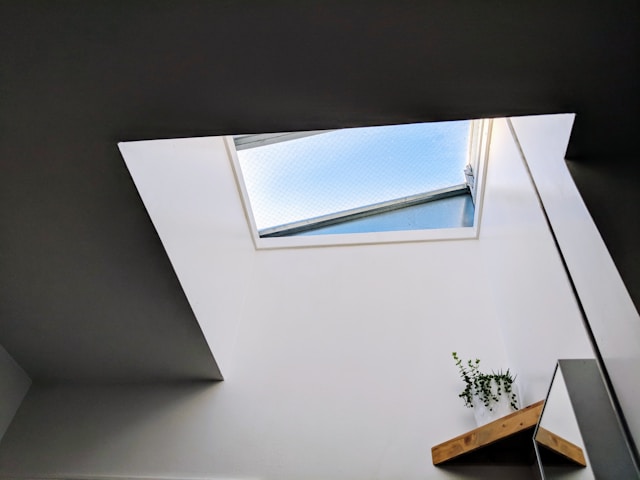Table of Contents
- Key Takeaways
- Understanding Different Vacuum Types
- Filtration Systems Explained
- Suction and Motor Efficiency
- Vacuum Cleaners and Floor Compatibility
- User-Friendly Features for an Enhanced Cleaning Experience
- Budget Considerations and Long-Term Value
- Ecological Factors
- Consumer Reviews and Testimonials
- The Importance of Brand Reputation and Reliability
Key Takeaways
- Discovering the appropriate vacuum type is vital for effective home cleaning and convenience.
- Filtration systems, such as HEPA filters, are pivotal in maintaining indoor air quality for health benefits.
- A balance between a vacuum’s motor efficiency and suction power dictates its overall performance and endurance.
- Investing in a vacuum cleaner should consider long-term value, budget, and environmental impact.
Understanding Different Vacuum Types
When it comes to thorough home cleaning, choosing the right vacuum cleaner is equivalent to selecting a trusty companion. From heavy-duty upright models to versatile canister designs, it’s necessary to examine each option’s strengths and limitations. For instance, upright vacuums boast substantial suction power for deep carpet cleaning. They are often the go-to option for large, carpeted areas and contain various attachments for varied cleaning tasks. On the other hand, canister vacuums are recognized for their mobility and ease of handling, making them suitable for multi-surface cleaning, from rugs to hardwood floors.
Stick vacuums emerge as the darlings of convenience, prized for their lightweight design and often cordless operation – ideal for quick spill cleanups and small messes. Their compact size makes storage a breeze, especially in smaller homes or apartments. For targeted cleaning, like car interiors or furniture, handheld vacuums are invaluable, providing spotless results in hard-to-reach spaces. Beyond the cleaning abilities, sure homeowners interested in vacuum products Lansdale PA, are attracted to the sleek modern designs that complement their home aesthetics.
Filtration Systems Explained
A vacuum filtration system is an unsung hero, trapping dust particles that would otherwise recirculate in your indoor environment. Filtration efficiency is critical for allergy sufferers and those sensitive to dust, with HEPA filters being the industry benchmark. These filters trap fine particles, prevent them from re-entering the air, and are vital for maintaining high indoor air quality. Notably, the Indoor Air Quality Association endorses HEPA filtration for its effectiveness in capturing airborne irritants, promoting a healthier home environment.
When selecting a vacuum cleaner, consider maintenance aspects like ease of cleaning or replacing filters. Washable filters offer convenience and cost savings, whereas bagless models eliminate the need to purchase bags regularly. Moreover, the initial expense for a higher-end filtration system may pay dividends in future health benefits and reduce the need to clean the filter.
Suction and Motor Efficiency
While a vacuum cleaner’s wattage gives an idea of electrical usage, it doesn’t directly translate to superior cleaning performance. Suction power and motor efficiency should drive your decision-making process. A potent motor ensures practical debris pickup from various surfaces, but efficiency denotes a vacuum’s prowess to maintain optimal performance over time. The hallmark of a good vacuum is its ability to sustain high suction levels even as the dirt chamber fills.
Maintaining these performance standards means adhering to routine care of your vacuum. Simple tasks such as emptying the dust compartment, cleaning filters, and checking for blockages in the hose can prolong the unit’s life and preserve its suction strength. Moreover, investing in a model with a motor that won’t degrade quickly over time can result in significant long-term savings, negating the need for frequent replacements.
Vacuum Cleaners and Floor Compatibility
In the quest for cleanliness, compatibility with your home’s flooring is paramount when choosing a vacuum cleaner. Versatile vacuums with settings and attachments for various floors can prevent damage to delicate hardwood and ensure proper care for plush carpets. For instance, vacuums with height adjustments can adapt from deep pile carpets to flat surfaces, such as laminate or tile, without missing a beat. With the diversity of flooring materials in modern homes, it’s advisable to consider a vacuum that includes specialized features, like a soft brush roll designed to care for sensitive wooden floors without scratching them. A closer look at the needs of hardwood floor owners reveals a demand for vacuums that balance suction power with gentle care to avoid scuffs. In aid of this precise need, reputable sources like Consumer Reports highlight specific models adept at maintaining the integrity of these surfaces while providing maximum dirt removal.
User-Friendly Features for an Enhanced Cleaning Experience
Vacuum cleaners in the modern era are more than mere dust busters; they come equipped with user-friendly features that offer enhanced usability. Ergonomic designs ease the physical strain of cleaning, while quick-release mechanisms make transitioning between tools and attachments seamless. The addition of smart sensors can guide you through optimal suction levels for varying floor types, thereby avoiding damage and inefficient cleaning. Technological advancements have brought forward devices equipped with Wi-Fi connectivity, enabling users to control their vacuums through mobile apps or even voice commands. This convenience connects well with the rise in popularity of cordless models. The ability to traverse your home without tethering to an outlet, combined with the increasing battery life and power of these units, accommodates a hassle-free clean worthy of 21st-century living standards.
Budget Considerations and Long-Term Value
Financial mindfulness extends into vacuum cleaner shopping, with the cost of ownership being a critical consideration. While an inexpensive model may seem enticing, the long-term expenses associated with the vacuum, such as the replacement of bags, filters, and even belts, can cumulatively surpass the initial savings. Opting for a unit that balances upfront costs and ongoing expenses can result in more significant savings over the product’s lifespan. It’s essential to evaluate not just the price but also the value proposition a vacuum presents. Easy access to spare parts, a robust build that withstands the rigors of regular use, and a warranty that mitigates repair costs define a vacuum’s value beyond its price tag. A machine that requires minimal maintenance and operates reliably saves time and money, accentuating its intrinsic value as a household essential.
Ecological Factors
Today’s environmentally conscious shopper prioritizes products with minimal carbon footprint. In the context of vacuum cleaners, energy efficiency isn’t just about reduced power consumption—it is a step towards ecological stewardship. As you shop, consider a unit’s energy rating, which may translate into significant energy bill savings while supporting a healthier planet. Ecological considerations extend to the vacuum’s construction and end-of-life disposal. Models made with recyclable materials designed for easy disassembly at the end of their service lives align with sustainable living practices. Certifications like ENERGY STAR or the EU Ecolabel can guide identifying products that fulfill ecological criteria, adding one more facet to informed purchasing decisions.
Consumer Reviews and Testimonials
Beyond the specifications and promised features, the actual test of a vacuum cleaner often lies in the hands-on experiences shared by actual users. Online reviews and testimonials offer genuine insights into a product’s reliability and performance. The cumulative wisdom from these sources can expose consistent issues or elevate models with a proven satisfaction track record. Aside from individual user reviews, professional assessments, and longevity tests further illuminate a vacuum cleaner’s performance. Understanding how a model fares over time under various conditions is invaluable in predicting how it will meet your home’s demands.
The Importance of Brand Reputation and Reliability
Selecting a brand with a strong reputation is akin to forging a relationship with a reliable partner. Brand legacy, customer service, and parts availability play into a vacuum cleaner’s overall value proposition. Esteemed brands have usually earned their status by consistently manufacturing quality products and fostering customer loyalty through practical support and service networks. In the vacuum cleaner landscape, brand reputation could influence future considerations, such as resale value and upgrade opportunities. Leading brands are typically at the forefront of innovation, and opting for such a brand could mean earlier access to new technologies and features that evolve the cleaning experience.










